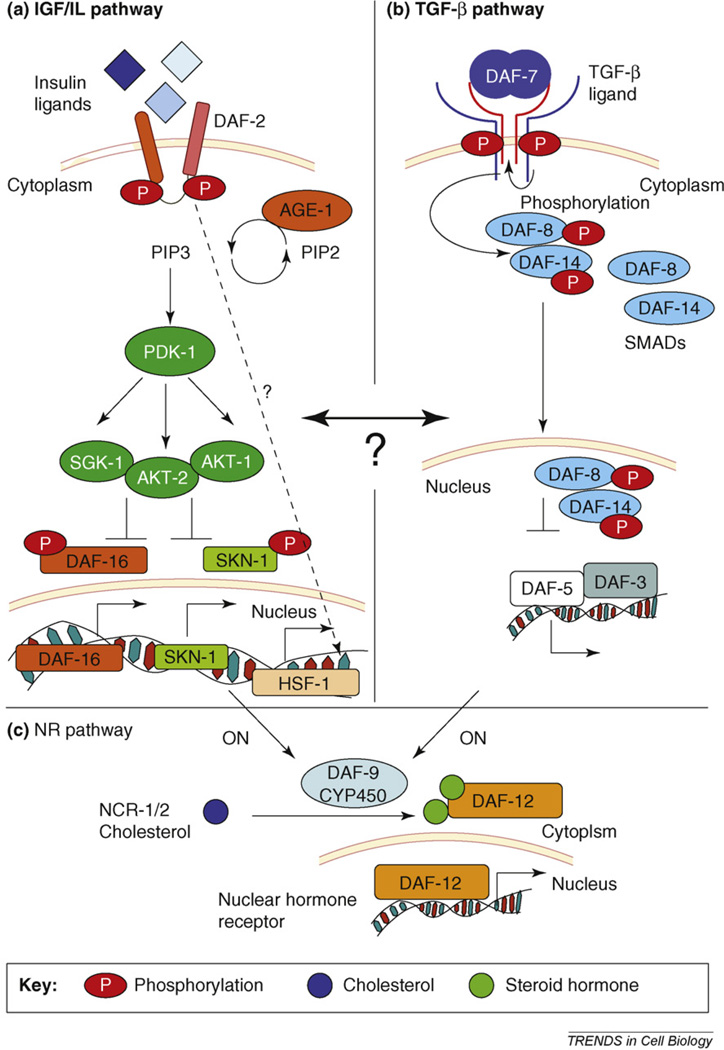Figure 2.
Neuroendocrine pathways regulate stress tolerance in C. elegans [13]. Schematic depiction of the three neuroendocrine pathways that regulate stress responses in C. elegans. (a) The IGF/IL signaling pathway. IL ligands bind the IL receptor DAF-2 to activate a phosphorylation cascade, which then activates the PI3 kinase AGE-1. This results in the phosphorylation of the ACG kinases, AKT-1 AKT-2 and SGK-1, which ultimately phosphorylate DAF-16 and SKN-1. Phosphorylated DAF-16 and SKN-1 are cytoplasmic and inactive. Unphosphorylated DAF-16 and SKN-1 are active and translocate to the nucleus to transcribe their target genes. IL signaling also modulates the activity of HSF1 in manner yet to be characterized, (b) The TGF-β signaling pathway in C. elegans has all the components of the canonical TGF-β signaling pathway. The TGF-β ligand DAF-7 binds the type I and type II receptors DAF-1 and DAF-4 to modulate the phosphorylation state of the downstream SMAD proteins DAF-8 and DAF-14. DAF-8 and DAF-14 inhibit the function of a DAF-3, a co-SMAD and DAF-5, a protein homologous to the Sno/Ski family of oncogenes. Phosphorylated DAF-8 and DAF-14 translocate to the nucleus where they transcribe its target genes involved in the development of dauer larvae. (c) The nuclear hormone receptor (NR) signaling pathway. Insulin/IGF-I and TGF-β peptide signals converge on the nuclear receptor branch of the dauer pathway. NCR-1/2, a Niemann-Pick C1 homolog, delivers cholesterol to DAF-9, presumably triggering the synthesis of steroid hormone. In the presence of hormone, DAF-12 directs expression of genes involved in reproductive development and the animals are not stress tolerant. In unfavorable environments, hormonal pathways are suppressed and unliganded DAF-12 specifies dauer development and stress resistance.

